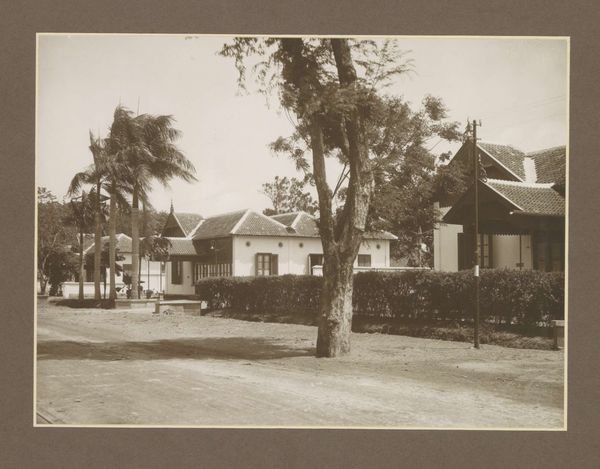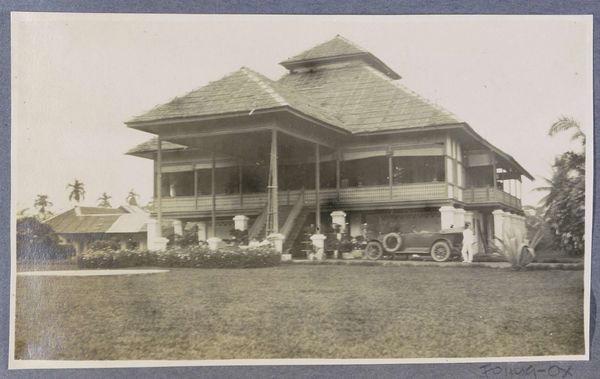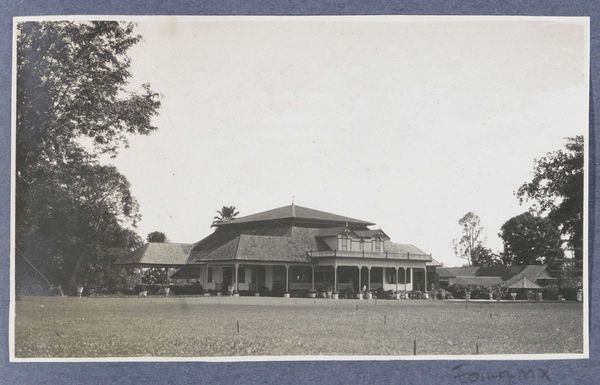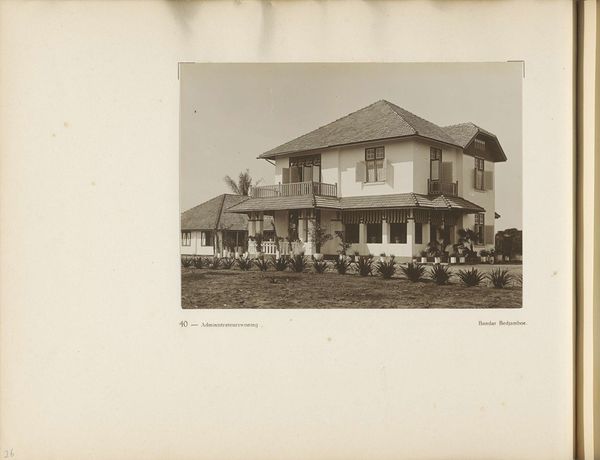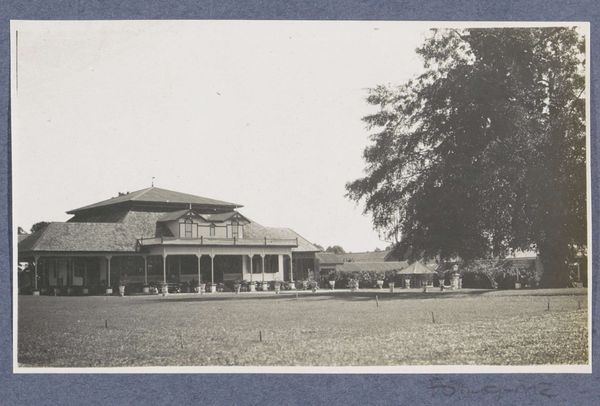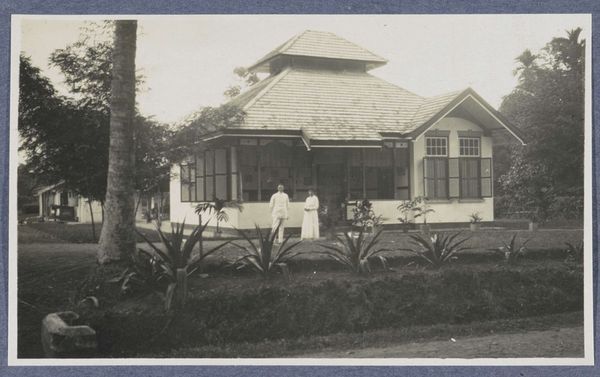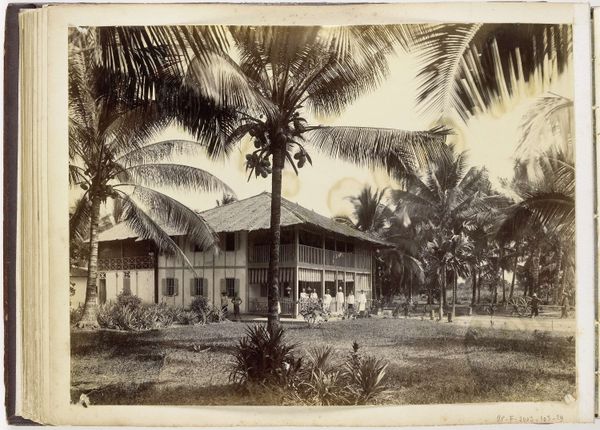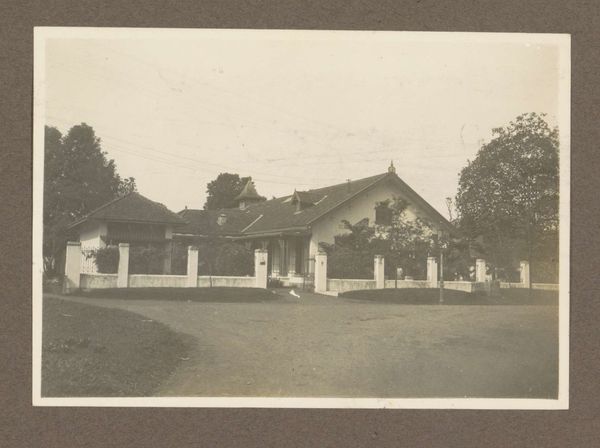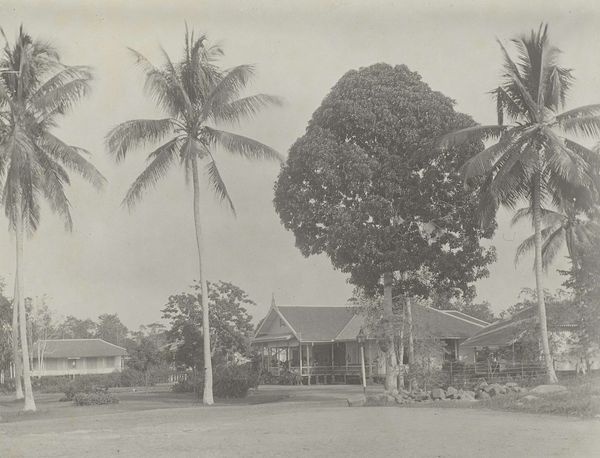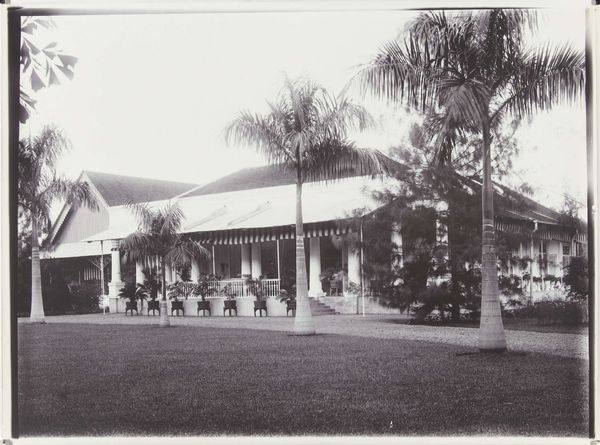
Administrateurshuis van tabaksplantage Mariendal van de Deli Maatschappij te Medan c. 1900 - 1920
0:00
0:00
print, photography, site-specific
# print
#
landscape
#
photography
#
orientalism
#
site-specific
Dimensions: height 79 mm, width 134 mm
Copyright: Rijks Museum: Open Domain
Editor: This photograph, taken sometime between 1900 and 1920, captures the Administrator's House of the Mariendal tobacco plantation in Medan. It’s a very formal composition; the building seems both imposing and somehow serene, surrounded by these almost symmetrical palm trees. What strikes you when you look at it? Curator: The most striking aspect, for me, is the tension embedded in its materiality. It is a photograph, a reproducible medium, documenting a specific site: the "Administrateurshuis" on a tobacco plantation. So, we are already dealing with layers of representation tied to systems of labor and ownership. Editor: Can you expand on that? Curator: Consider the means of production implied by the photograph itself: the camera, the chemicals, the paper – all components manufactured and distributed through complex industrial networks. Then, consider the plantation. What resources were extracted, what labor was exploited to construct that house, that landscape? The photograph naturalizes the social hierarchy inherent in a colonial enterprise. Editor: So, you're seeing the photo as evidence of power dynamics rather than just a picture of a pretty house. Curator: Precisely. And further, what choices are reflected in the architectural style? How do the design and materials of the house function to signify the administrator’s authority? This is a document deeply embedded in the social and material realities of colonial Indonesia. How does this consideration alter your reading of “serenity?” Editor: It definitely shifts it. The serenity seems almost like a facade, masking the harsh realities of the plantation. It makes me question what labor underpinned even the taking of the photo itself. I hadn’t considered photography as part of that system before. Curator: Exactly, and questioning is vital. Analyzing art through the lens of its material conditions and social context unveils its true complexity.
Comments
No comments
Be the first to comment and join the conversation on the ultimate creative platform.

